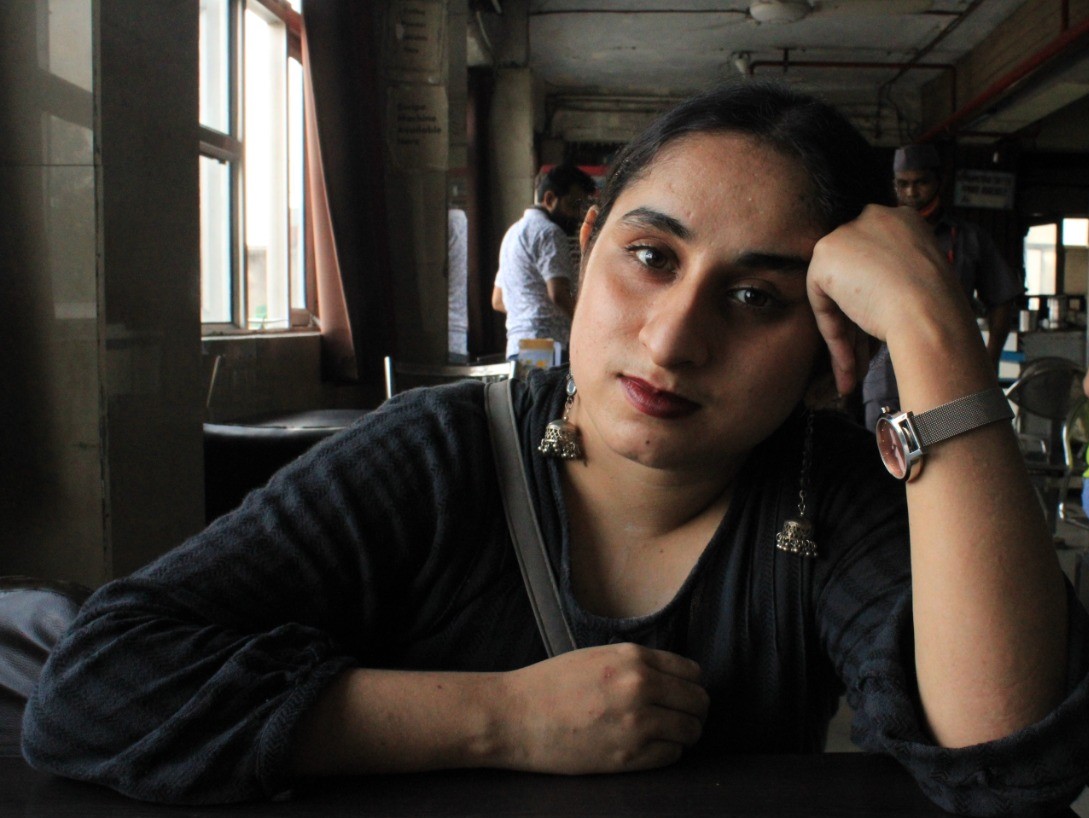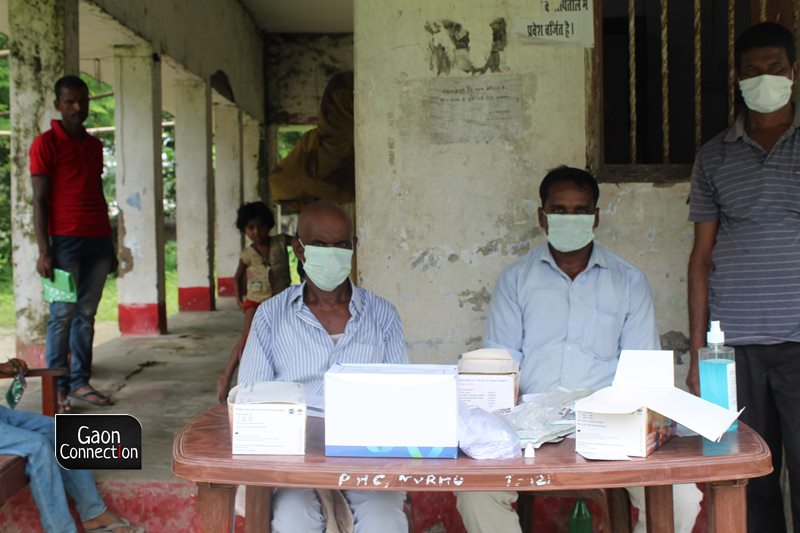Deep inside rural Mithilanchal in Bihar, vaccine hesitancy is alive and well
The response to COVID19 vaccination drive has been tepid amongst the Musahar and the Muslim communities in Madhepura district of Bihar. Rumours, loss of a day’s wage, distance from health centres, and large migrant population are some of the factors affecting vaccination coverage.


Vaccine hesitancy in Bihar's Murho continues with rumours about its ill effects that is keeping most people away. All photos: Shruty Yadav
Madhepura, Bihar
Over a year ago, Binay Yadav, a resident of Murho panchayat in Bihar, left for Meerut in the neighbouring state of Uttar Pradesh where he worked as a labourer at the subzi mandi. It was there that he took his first dose of COVID19 vaccination, only because of rumours that he would not get his salary otherwise. He said that the fear of losing his wages was far greater than the fear of the coronavirus or the ‘side-effects’ of the vaccine.
The pandemic had hit him hard and it was after great difficulty that Binay said he had found work at the subzi mandi. In July last year, he had returned to his village in Madhepura district of Bihar, about 1,800 kilometres from Gurdaspur in Punjab where he worked as a daily wage labourer. Back home, he was without work for over four months before he left for Meerut.
“I heard that our bank khata (bank account) would be closed if we did not get a shot. I could not afford that and so I got myself vaccinated,” said Binay, who lost his job at the subzi mandi too and is now back in Murho, struggling to make ends meet, and deep in debt.

Binay has no idea when his second dose of the COVID19 vaccine is due. He told Gaon Connection that he could not get updates because he did not have a functional mobile with him.
Also Read: Hope floats in flood-hit Bihar as Tika Wali Naav ensures COVID vaccination in marooned villages
Meanwhile, almost a year after India launched its massive vaccination drive against COVID19, vaccine hesitancy in Murho continues with rumours about its ill effects that is keeping most people away. Binay’s wife is still reluctant and Binay said he was “trying to persuade her to get inoculated”.
Murho is one of the 17 panchayats under Madhepura district in north Bihar. The village has about 8,000 families and lies in the picturesque but flood-prone, Maithili-speaking Terai region. Agriculture is the mainstay occupation of villagers, but floods and frequent waterlogging in the monsoon keeps the yield very low.
“I was initially nervous about the vaccination,” Lali Devi, a farmer from Murho, told Gaon Connection. From the Musahar community, Lali Devi, who is in her twenties, is the mother of two boys and a girl. “Some said the vaccine hurt the digestive system, others said we could die. There was talk that the vaccination was the government’s ploy to depopulate our community,” she said.
Apart from the rumours, Lali Devi said it was a logistical nightmare to get to the vaccination centres. She was asked to get her vaccination at Kishunganj, 37 kilometres away from her village. Lali said she did not understand why she could not go to the Narhi panchayat, which is under the Murliganj block, 17 kilometres away from her village. For her, the Murho primary healthcare centre (PHC) or any other vaccine centre in Murliganj would have been way more convenient.
Travelling to Kishunganj with her children would cost her a lot of money plus the prospect of missing out on a day’s wages which she could ill afford. However, Lali finally got her first dose in June this year at Kishangunj. She said she had only heard talks about how there should be a gap of 180 days between the two doses of vaccination, but she was not sure about the exact timeline in which she was supposed to get the final dose.

Addressing vaccine hesitancy in rural Bihar
It was an ASHA (Accredited Social Health Activist) worker who convinced Lali to get vaccinated. “I had my inhibitions, but it was Durga didi who convinced many of us to get the vaccine dosage. Durga didi was appointed as an ASHA worker recently in the village,” Lali Devi said.
A nationwide rural survey conducted by Gaon Connection last year revealed that 62.7 per cent of rural respondents believed COVID19 was still around while 21 per cent said it was not. A little more than 15 per cent claimed to be unaware of the virus while 1.3 per cent said that COVID19 was a hoax. Another 8.9 per cent respondents thought COVID19 was just a figment of rumours, 9.4 per cent thought it was a disease of the cities only.
Like Binay Yadav, 35-year old Nazir, a migrant worker in Delhi was also stranded along with his family when the lockdown was suddenly announced last March. He managed to get back to his village Murho where he said that Atul Kumar, whose mother Chandrika Devi was the mukhiya of Murho, helped him a lot. And, the mukhiya’s son was probably instrumental in persuading him to get vaccinated.

“I feel no hesitation in trusting the vaccine now. I did have my inhibitions, but now I encourage others to get the injections as well,” Nazir told Gaon Connection. He took along more than 20 villagers with him to take the first dose, he said. “More people came forward later,” he added.
However, even the ageing mukhiya of Murho panchayat, Chandrika Devi, has only received her first vaccination so far. Her son, Atul Kumar, who manages her affairs has not had a single dose yet.
“I didn’t have enough time for this, I am constantly flooded with requests for help from the locals who come to me with other concerns like installation of handpumps or the street lamps not being installed near their houses, etc.,” Atul Kumar told Gaon Connection. He said as a proxy mukhiya of the village he was extremely busy to spare time for vaccination.
‘Corona Phobia’
Was the chaos that followed the lockdown responsible for vaccine hesitancy? Migrant workers were stranded far away from home with no idea how to get back. Or, if they did, they were faced with no source of livelihoods.
A study titled ‘Psychosocial impact of COVID-19’, published in the Diabetology & Metabolic Syndrome Journal in May 2020, mentioned the term ‘Corona Phobia’. According to the study, “Incidences of death while migrating, mass chemical spraying over migrants, and quarantine on trees or boats …will definitely challenge the basic human rights for health and self-esteem which might sprout mass anger, disobedience and long-lasting psychological stigma.”
Like it was elsewhere in the country, the initial focus of vaccinations in January 2021, was on those aged 45 years and above in Murho. And, as the country celebrated its 100-crore vaccination milestone between October 20 and 22, Murho began vaccinating its 18-years-and-above category of population very late.

Breaking vaccine hesitancy
According to Santosh Kumar, Block Health Officer, Murho, the response to vaccine drives was tepid especially amongst the Musahar and the Muslim communities in Madhepura district.
“Some believe that the vaccine will make their men infertile. And, some anti-government elements feed such rumours and fears in the village communities,” the block health officer told Gaon Connection.
“But community and religious leaders can make a difference and enhance the response of those still hesitating to take the vaccination,” Putul Ray, the auxiliary nurse midwife (ANM) at the Murho PHC, told Gaon Connection. “Sometimes, people want to know how long they should abstain from intoxicants and some others are worried that taking the vaccination will have an impact on their sexual activity,” she said.
“The maulvi or the elders and the educated amongst the Dalit community can bring about change,” the ANM believed.
“Many have been vaccinated here. Nurses and doctors visit the homes of the people and administer the vaccine in the community hall,” Abdul Ghani, a local affiliate of the Rashtriya Janata Dal party, told Gaon Connection. “We are sure in the coming days more and more of our people will be taking the dose fully,” he added.
“There are people who have migrated, some are no more and we are aiming to cover at least 70 per cent of the population as per the 2011 census data, assuming that achieving that number would imply that we were able to bring all current residents under the fold of vaccination,” the Block Health Officer, Santosh Kumar, said.
Also Read: By roping in religious leaders and young influencers, Unnao in UP is addressing vaccine hesitancy
According to him, the vaccination drive in Madhepura district was initiated on January 16, 2021. A total of 17,419 doses were administered in Murho between January 16 and July 13, this year, with 15,853 people receiving the first dose. The second dose was administered to 1,566 people only. The number of people vaccinated in Madhepura was 295,790 with 255,210 being vaccinated for the first time. The number of those receiving the second dose in 178 days was 40,580.
The awareness campaigns so far in the villages are informally handled, said Santosh Kumar and Putul Ray. While local and district authorities do their bit in persuading the people to get vaccinated, there is no formal documentation of the process that would be useful in more targeted policy implementations by the health infrastructure.
Many of the village inhabitants avoid getting vaccinated only because it means they will lose a day’s wages, and there is no policy to compensate them for that. Then, of course it is the social media where conspiracy theories abound, that has played a role in spreading fear. The lack of a sustained and clear communication or direction from elders, authorities, etc., on the pandemic and how to deal with it has added to the problem.
Some names of the villagers in the article have been changed as per the request.
This story was reported under the National Foundation for India (NFI) Fellowship for independent journalists.

